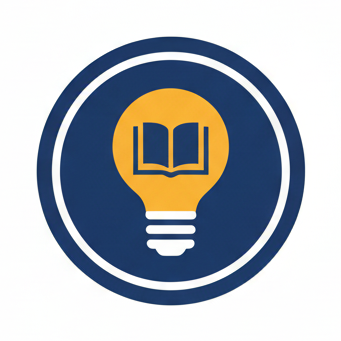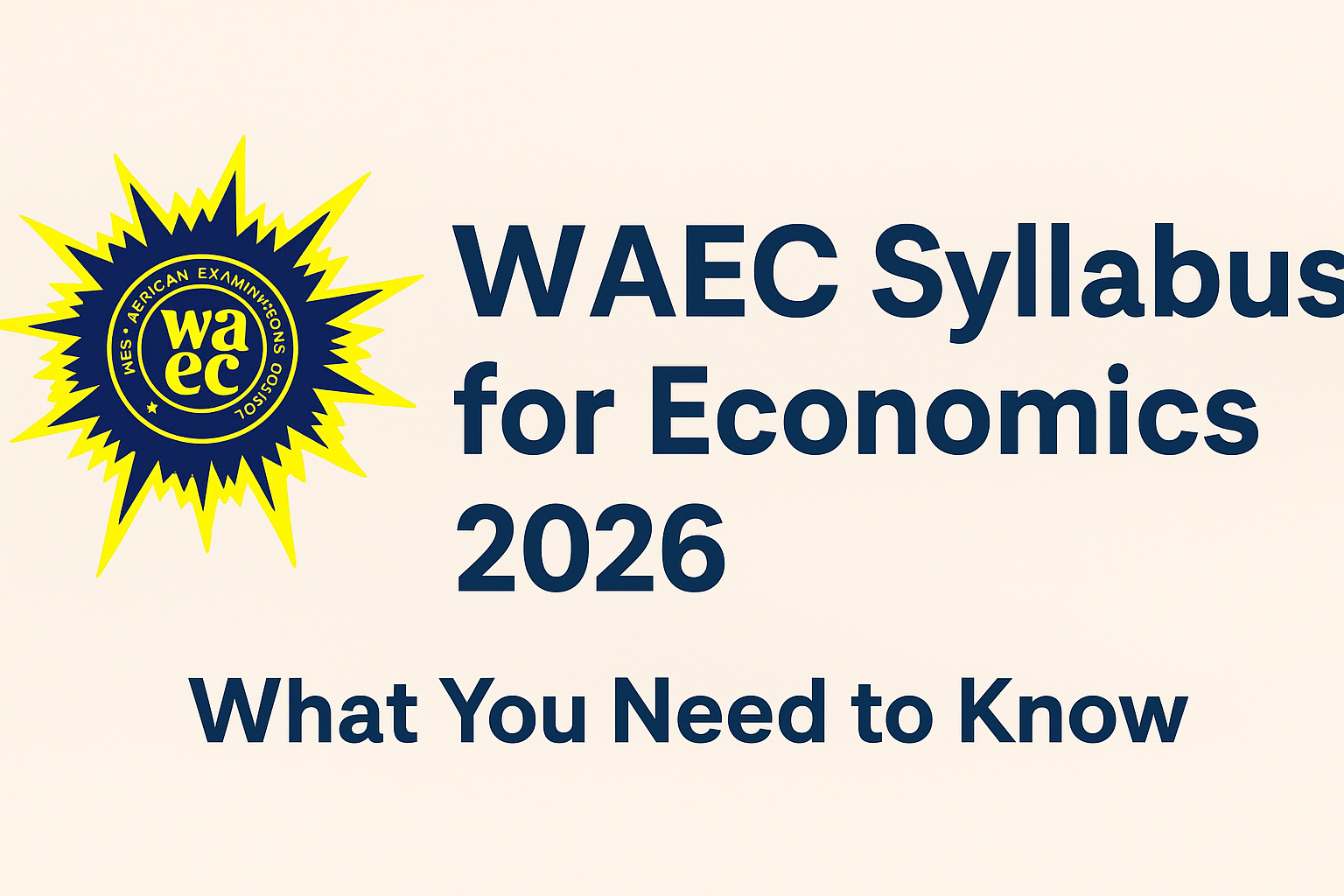If you’re planning to write WAEC in 2026, then the Economics syllabus is one of the most important things you need to study. It tells you exactly what WAEC expects from you, the topics questions will come from, and the skills you must master to perform well. Many students make the mistake of reading randomly, but using the syllabus makes your preparation faster, easier, and more focused.
This guide breaks down the full WAEC Economics Syllabus for 2026 in a simple way you can understand. Whether you’re a student, a parent, or a teacher, this version helps you see clearly what you must cover before the exam.
Why the WAEC Economics Syllabus 2026 Is Important
Preparing for WAEC without the syllabus is like trying to cook without knowing the recipe.
The syllabus helps you by:
- Showing you all the topics WAEC will test.
- Helping you avoid wasting time on irrelevant content.
- Making your study routine more organized.
- Giving you confidence because you know you’re reading the right things.
- Increasing your chances of scoring an A1 in Economics.
WAEC Economics Syllabus 2026
Below are the major topics and what you should understand in each one. The explanations are simple, so you can focus on learning and not confusion.
1. Meaning, Scope, and Basic Concepts of Economics
This section helps you understand what Economics is all about. You’ll learn:
- Different definitions of Economics.
- Why scarcity leads to choice and opportunity cost.
- The difference between wants and needs.
- The basic economic problems every society faces.
- The factors of production like land, labour, capital, and entrepreneurship.
2. Tools of Economic Analysis
Economics involves a lot of data. In this topic, WAEC wants you to know how to:
- Present data using tables, charts, and graphs.
- Identify types of graphs and how they are used.
- Arrange information using frequency tables.
- Calculate mean, median, and mode.
- Understand simple index numbers.
3. Theory of Demand
Here, you learn how consumers behave when buying goods. You should know:
- What demand means.
- Types of demand.
- The law of demand and why demand falls when price rises.
- How to draw demand curves.
- Factors that affect demand.
- Elasticity of demand and its real-life uses.
4. Theory of Supply
This part explains how producers behave. You need to understand:
- What supply means.
- The law of supply.
- Supply schedules and curves.
- Factors influencing supply.
- Elasticity of supply.
- Differences between supply and stock.
5. Market Structure and Price Determination
You will learn:
- What a market is.
- Types of markets like perfect and imperfect competition.
- How prices are determined through demand and supply.
- Market equilibrium and how it works.
- Government price control such as minimum wage or price ceiling.
6. Production and Theory of Costs
This topic helps you understand how goods and services are produced. You will study:
- Types and stages of production.
- Division of labour and specialization.
- Short-run and long-run production.
- Costs of production (fixed, variable, total, marginal).
- Revenue concepts.
7. Business Organizations
Businesses operate in different forms. WAEC wants you to understand:
- Sole proprietorship, partnership, and companies.
- Cooperatives and public enterprises.
- Advantages and disadvantages of each type of business.
- Privatization and commercialization.
8. Labour Market
In this section, you will learn about the human factor in production:
- Meaning and types of labour.
- Factors affecting labour supply.
- Wage determination.
- Types of unemployment.
- Functions of trade unions.
9. Money and Financial Institutions
Everything about money and the banking system is here. You should know:
- The functions and qualities of money.
- The evolution of money from trade-by-barter to digital payments.
- Functions of commercial banks and the Central Bank.
- Non-bank financial institutions.
- Causes and control of inflation.
10. Public Finance
This topic deals with how government spends and earns money. Learn:
- Meaning and importance of public finance.
- Government revenue (taxes, grants, loans).
- Types of government expenditure.
- The national budget.
- Fiscal policies and taxation principles.
11. National Income
WAEC expects you to understand:
- What national income means.
- Concepts like GDP, GNP, NNP, PI, DI.
- Methods of measuring national income.
- Problems of measurement in developing countries.
- Uses of national income data.
12. Agricultural Economics
You will study:
- The role of agriculture in the economy.
- Problems facing agriculture in West Africa.
- Factors that influence agricultural development.
- Government policies on agriculture.
- Food security.
13. Population and Labour Force
In this section, you will understand:
- Population structure and distribution.
- Factors that influence population growth.
- Overpopulation and underpopulation.
- Population census.
- Employment and the labour force.
14. International Trade
This topic focuses on trading between countries. You will learn:
- Importance of international trade.
- Balance of trade and balance of payments.
- Foreign exchange.
- Trade protection and barriers.
- ECOWAS and regional trade.
15. Economic Development and Planning
Here, you should understand:
- What economic development means.
- Indicators of development (HDI, income, healthcare).
- Features of developing countries.
- Government roles in development.
- National development plans.
16. Consumer Education
Every student should know:
- Rights and responsibilities of consumers.
- Consumer protection laws and agencies.
- How to make wise consumer choices.
17. Economics of West Africa
This topic helps you see the bigger picture by learning:
- Features of West African economies.
- Challenges of economic cooperation.
- The role of ECOWAS in promoting development.
How to Prepare Effectively for WAEC Economics 2026
To increase your chances of scoring high, follow these practical tips:
- Study the syllabus topic by topic.
- Practice past WAEC questions frequently.
- Draw graphs and interpret charts regularly.
- Use recommended Economics textbooks.
- Revise consistently, don’t cram.
- Study real-life examples to understand concepts better.


Leave a Reply